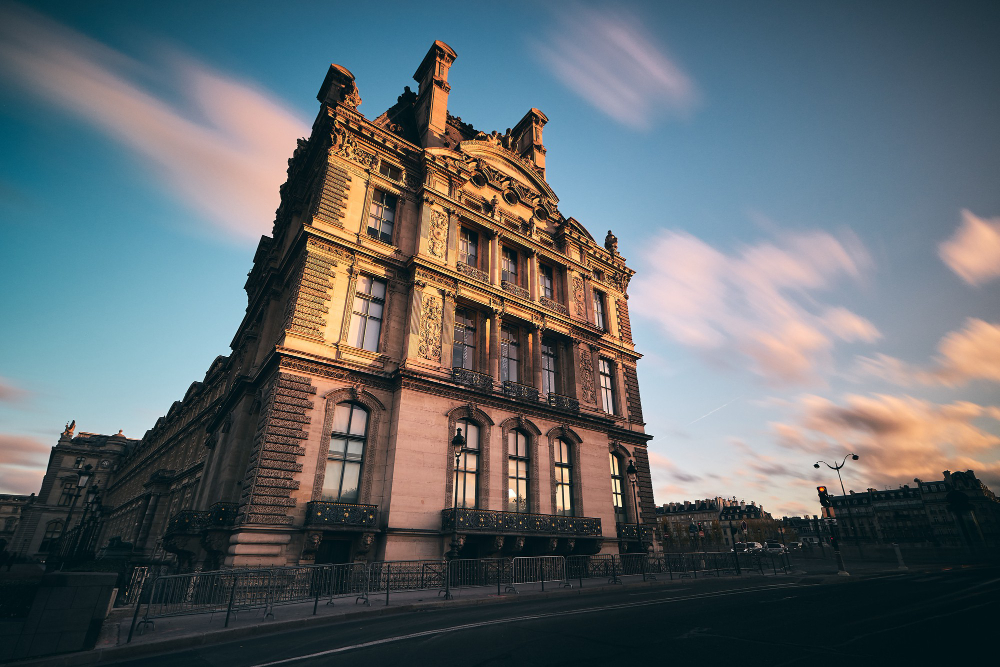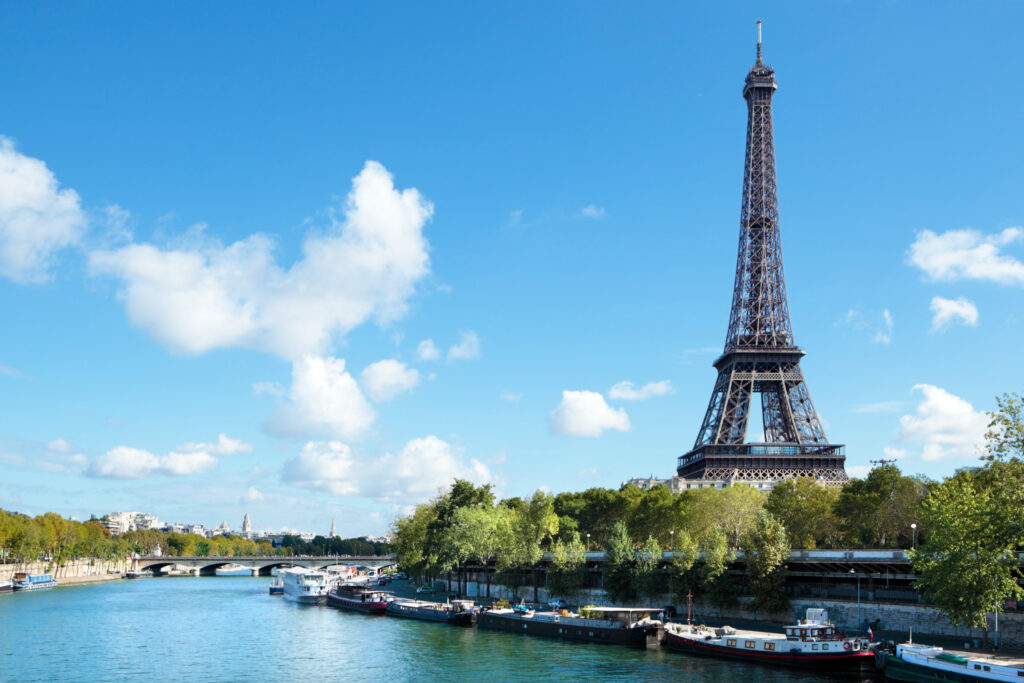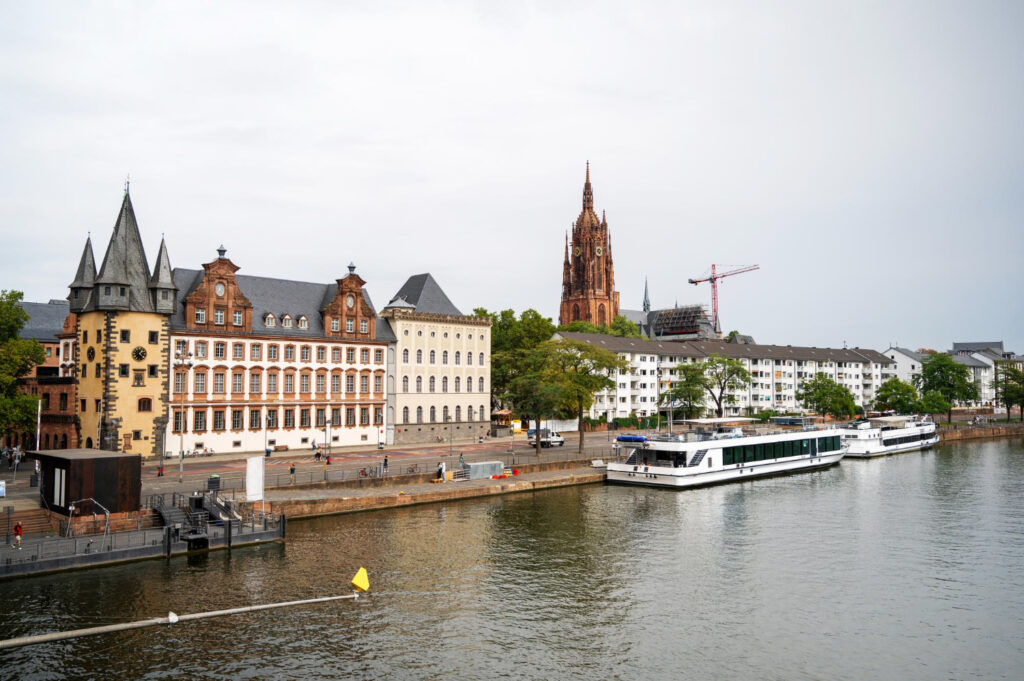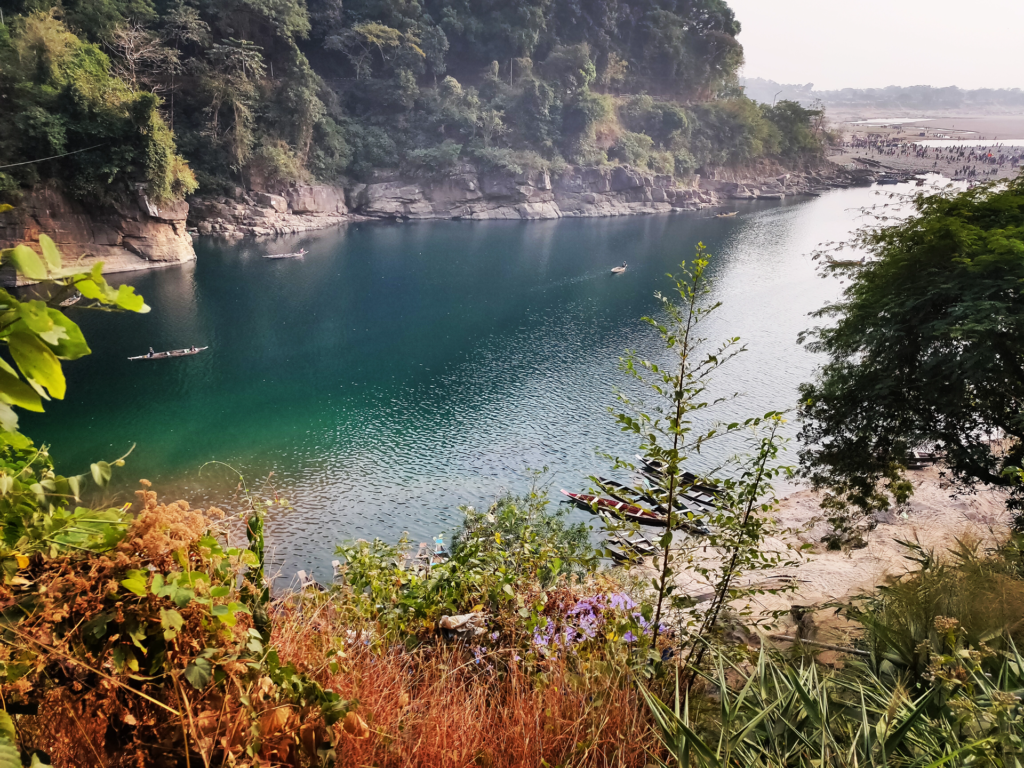France is a country brimming with history, culture, and stunning landscapes. Whether you’re a history enthusiast, a lover of fine wine and cuisine, or someone who enjoys the great outdoors, France has something for everyone. In this guide, we’ll take you through 20 must-visit places in France, each offering its own unique charm and attractions.
Paris – The City of Light
Iconic Landmarks
When you think of places to visit in France, Paris is usually the first that comes to mind. Begin your journey with the Eiffel Tower, the most recognizable landmark in the world. Climb to the top for a breathtaking view of the city. Next, explore the Louvre Museum, home to thousands of works of art, including the Mona Lisa.
Charming Neighborhoods
Paris is also known for its charming neighborhoods. Stroll through Montmartre, where artists like Picasso once lived, and visit the Sacré-Cœur Basilica. Wander the narrow streets of Le Marais, known for its historic buildings, trendy boutiques, and vibrant nightlife.
Versailles – The Grand Palace
The Palace of Versailles
A visit to France wouldn’t be complete without seeing the Palace of Versailles. This opulent palace was the residence of Louis XIV and is renowned for its stunning architecture and beautiful gardens. Take a tour of the Hall of Mirrors, the Royal Apartments, and the expansive gardens.
The Gardens of Versailles
The gardens of Versailles are just as impressive as the palace itself. Spread over 800 hectares, the gardens feature intricate fountains, sculptures, and perfectly manicured lawns. Don’t miss the Grand Trianon and the Petit Trianon, smaller palaces located within the grounds.

Lyon – The Culinary Capital
Old Town Lyon
Lyon is a city that delights food lovers from around the world. Begin your visit in France’s culinary capital by exploring Vieux Lyon, the city’s Old Town. This UNESCO World Heritage site is filled with Renaissance architecture, narrow streets, and traboules (hidden passageways).
Lyon’s Gastronomy
Lyon is also famous for its gastronomy. Visit the local bouchons (traditional Lyonnais restaurants) to enjoy regional specialties such as quenelles, saucisson, and tarte à la praline. Don’t miss the Halles de Lyon Paul Bocuse, an indoor market named after the legendary chef, offering a wide array of gourmet products.
Provence – The Land of Lavender
Lavender Fields
Provence is a region known for its stunning landscapes and charming villages. One of the most iconic sights to visit in France is the lavender fields, which bloom from late June to early August. The fields near the Abbey of Sénanque are particularly picturesque.
Historic Villages
Provence is also home to many historic villages. Visit Gordes, a hilltop village with stone houses and narrow streets. Roussillon, known for its ochre cliffs and colorful buildings, is another must-see. Enjoy a leisurely meal at a local café and soak in the Provencal ambiance.
The French Riviera – Glamour by the Sea
Nice – The Heart of the Riviera
The French Riviera is synonymous with glamour and beauty. Start your visit in France’s southern coast in Nice, known for its stunning Promenade des Anglais and beautiful beaches. Explore the Old Town with its narrow streets, colorful buildings, and bustling markets.
Cannes and Monaco
Cannes, famous for its film festival, is another highlight of the French Riviera. Stroll along La Croisette, a boulevard lined with luxury shops and hotels. Monaco, a tiny principality, is known for its opulent Monte Carlo Casino and the Prince’s Palace. Take a tour of the palace and enjoy the stunning views of the Mediterranean.
Normandy – History and Scenery
Mont Saint-Michel
Normandy is a region rich in history and natural beauty. The most iconic landmark to visit in France’s Normandy region is Mont Saint-Michel, a medieval abbey perched on a rocky island. Explore the abbey, wander the narrow streets, and enjoy the panoramic views.
D-Day Beaches
Normandy is also known for its D-Day beaches, where Allied forces landed during World War II. Visit Omaha Beach, Utah Beach, and the American Cemetery at Colleville-sur-Mer to pay tribute to the soldiers who fought in the war. The nearby town of Bayeux is home to the famous Bayeux Tapestry, depicting the Norman conquest of England.
Loire Valley – The Garden of France
Majestic Châteaux
The Loire Valley is known as the “Garden of France” due to its fertile land and stunning castles. Château de Chambord, with its distinctive French Renaissance architecture, is a must-visit. Château de Chenonceau, spanning the River Cher, is equally impressive with its beautiful gardens.
Picturesque Towns
In addition to its châteaux, the Loire Valley is home to many picturesque towns. Visit Amboise, where Leonardo da Vinci spent his last years, and explore the Château d’Amboise. Blois, with its royal castle and vibrant town center, is another charming destination.
Alsace – A Blend of Cultures
Strasbourg – The Capital of Alsace
Alsace is a region known for its unique blend of French and German cultures. Begin your visit in Strasbourg, the capital of Alsace, with its stunning Gothic cathedral and charming Petite France district. Take a boat tour along the canals for a different perspective of the city.
Colmar – A Fairy-Tale Town
Colmar, often described as a fairy-tale town, is another highlight of Alsace. Stroll through the Old Town with its colorful half-timbered houses and flower-lined canals. Don’t miss the Unterlinden Museum, housed in a former convent, which features a diverse collection of art and artifacts.
Bordeaux – Wine and Elegance
Bordeaux’s Wine Region
Bordeaux is synonymous with fine wine. Take a tour of the nearby vineyards and châteaux to learn about the wine-making process and sample some of the world’s best wines. The Médoc, Saint-Émilion, and Pomerol regions are particularly renowned for their excellent vintages.
The City of Bordeaux
The city of Bordeaux itself is a UNESCO World Heritage site, known for its elegant 18th-century architecture. Visit the Place de la Bourse, with its stunning water mirror, and explore the historic district of Saint-Pierre. The Cité du Vin, an interactive wine museum, offers a comprehensive overview of wine culture.
Brittany – Rugged Coastlines and Celtic Charm
Saint-Malo – The Walled City
Brittany is a region known for its rugged coastlines and Celtic heritage. Start your visit in France’s northwest region with Saint-Malo, a walled city with a rich maritime history. Walk along the ramparts for stunning views of the sea and explore the narrow streets of the Old Town.
Quimper – A Taste of Breton Culture
Quimper, the cultural heart of Brittany, is known for its traditional Breton culture and beautiful ceramics. Visit the Saint-Corentin Cathedral and stroll through the charming streets lined with half-timbered houses. Don’t miss the Faïencerie Henriot, where you can see the famous Quimper pottery being made.
Corsica – The Island of Beauty
Ajaccio – The Birthplace of Napoleon
Corsica, often called the “Island of Beauty,” is known for its stunning landscapes and rich history. Start your visit in Ajaccio, the birthplace of Napoleon Bonaparte. Explore the Napoleon Museum and stroll along the picturesque waterfront.
Bonifacio – A Cliffside Gem
Bonifacio, located on the southern tip of Corsica, is a stunning cliffside town with a rich history. Take a boat tour to see the dramatic limestone cliffs and explore the medieval citadel. The nearby beaches of Santa Giulia and Palombaggia are also worth a visit for their crystal-clear waters.
The French Alps – A Year-Round Playground
Chamonix – A Winter Wonderland
The French Alps are a paradise for outdoor enthusiasts. Chamonix, located at the foot of Mont Blanc, is a popular destination for skiing, snowboarding, and mountaineering. In the summer, the area offers excellent hiking and climbing opportunities.
Annecy – The Venice of the Alps
Annecy, known as the “Venice of the Alps,” is a charming town located on the shores of Lake Annecy. Stroll through the Old Town with its canals and colorful buildings, and enjoy a boat ride on the lake. The nearby Semnoz mountain offers stunning panoramic views and is a great spot for hiking and paragliding.
Burgundy – Wine and History
Dijon – The Capital of Burgundy
Burgundy is a region renowned for its fine wines and rich history. Start your visit in Dijon, the capital of Burgundy, known for its mustard and stunning architecture. Explore the Palace of the Dukes of Burgundy and visit the Dijon Mustard Museum to learn about the city’s culinary heritage.
Beaune – The Wine Capital
Beaune, often referred to as the wine capital of Burgundy, is another must-visit destination. The Hospices de Beaune, a stunning medieval hospital, is now a museum and hosts an annual wine auction. Take a tour of the nearby vineyards and sample some of the region’s best wines.
The Loire Valley – The Land of Castles
Château de Chambord
The Loire Valley, known as the “Garden of France,” is famous for its stunning castles. Château de Chambord, with its distinctive French Renaissance architecture, is a must-visit. Explore the grand rooms and climb to the rooftop for panoramic views of the surrounding parkland.
Château de Chenonceau
Château de Chenonceau, spanning the River Cher, is another highlight of the Loire Valley. The castle’s beautifully decorated rooms and stunning gardens make it one of the most visited châteaux in France. Don’t miss the chance to take a boat ride on the river for a unique perspective of the castle.

Languedoc-Roussillon – A Hidden Gem
Carcassonne – A Medieval Fortress
Languedoc-Roussillon is a region known for its rich history and beautiful landscapes. Start your visit in Carcassonne, a medieval fortress town with well-preserved ramparts and towers. Explore the narrow streets of the Old Town and visit the Château Comtal for stunning views of the surrounding countryside.
Nîmes – Roman Heritage
Nîmes, often referred to as the “French Rome,” is known for its well-preserved Roman monuments. Visit the Arena of Nîmes, a Roman amphitheater that still hosts events today, and explore the Maison Carrée, a beautifully preserved Roman temple. The nearby Pont du Gard, an ancient Roman aqueduct, is also worth a visit.
FAQs and Their Answers
- What is the best time to visit France?
- The best time to visit France is in the spring (April to June) or fall (September to November) when the weather is pleasant, and the crowds are smaller.
- Do I need a visa to visit France?
- Visa requirements for France depend on your nationality. Citizens of the EU, the USA, Canada, Australia, and several other countries can enter France without a visa for short stays. Check with the French consulate for specific requirements.
- What are some must-try French foods?
- Must-try French foods include croissants, baguettes, escargot, coq au vin, ratatouille, and crème brûlée. Don’t forget to sample regional specialties and fine wines.
- Is France a family-friendly destination?
- Yes, France is very family-friendly with numerous parks, museums, castles, and attractions suitable for children. Cities like Paris, Lyon, and Nice offer plenty of activities for families.
- What is the best way to travel around France?
- The best way to travel around France is by train. The country has an extensive and efficient rail network. Renting a car is also an option for more flexibility, especially in rural areas.
- Are English speakers welcome in France?
- Yes, many French people speak English, especially in larger cities and tourist areas. However, learning a few basic French phrases can enhance your travel experience.
- What are some unique souvenirs to bring back from France?
- Unique souvenirs include wine, cheese, macarons, lavender products, Provençal fabrics, and traditional French soaps.
- How safe is France for tourists?
- France is generally a very safe country for tourists. Like any destination, it’s important to take standard precautions and be aware of your surroundings, especially in crowded areas.
- Can I use my credit card in France?
- Credit cards are widely accepted in larger cities and tourist areas, but it’s a good idea to carry some cash, especially in smaller towns and rural areas where cash is preferred.
- What cultural etiquette should I be aware of in France?
- It’s polite to greet people with a “Bonjour” (hello) and “Au revoir” (goodbye), be punctual, and address people formally until invited to use first names. Tipping is appreciated in restaurants, typically around 5-10%.





